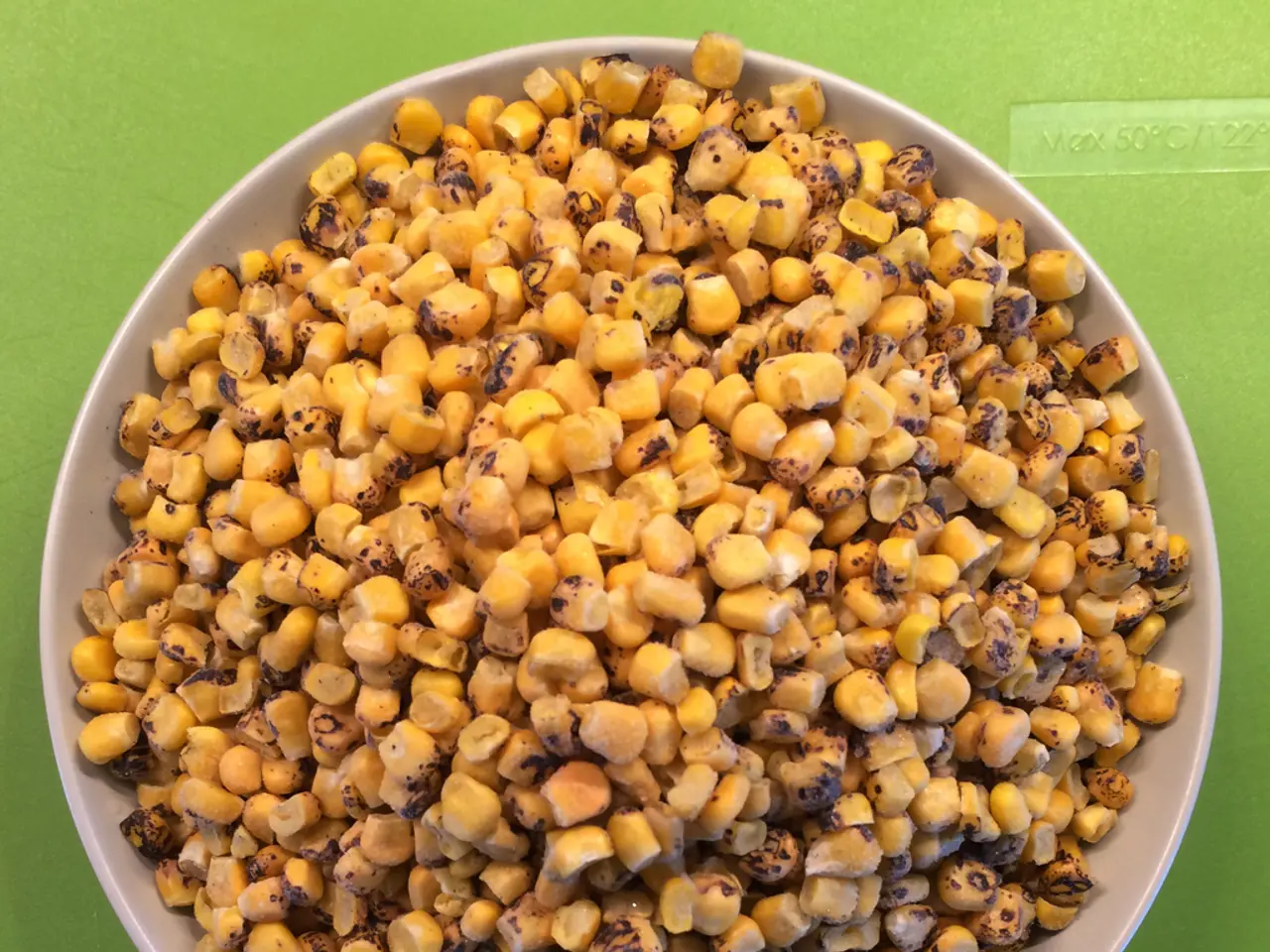Grazing Livestock on Corn Fields
In the realm of livestock farming, corn has emerged as a versatile and valuable forage option, particularly during the fall months. A 30-head cow herd, weighing an average of 1,000 pounds each, requires approximately 6 acres of corn to be fed for 60 days in the fall.
When it comes to grazing corn, the approach is often strip-grazing, allowing livestock access only to enough forage for two to three days by utilising an electrified temporary fence. This method ensures efficient use of the forage and helps maintain the health of the crop.
To feed 900 pounds of dry matter to such a herd, approximately 1,800 corn plants are needed, assuming 75 percent effective grazing. Corn provides a high dry-matter yield per acre and cost per pound of gain, making it an attractive option for livestock producers.
However, grazing corn is not without its challenges. Corn can be grazed during various periods, including the hot summer months, the mid-summer slump, late summer to early fall, and even during the fall and winter months. But, it's crucial to be aware of potential health concerns such as founder, nitrate poisoning, and prussic acid poisoning. Prussic acid poisoning is associated with shattercane and johnsongrass, which may be present as weeds in corn fields. If these weeds are present, then it's advisable not to graze frosted fields.
When planting corn, considerations include using a planter box seed treatment to control wire worms, seed corn maggots, and other corn insects, especially when planting no-till or into a sod field.
When it comes to selecting the best corn hybrids for grazing, prioritise hybrids bred for forage traits with good yield and nutritive value. It's also essential to choose hybrids that are regionally adapted for climate and soil conditions, consider pest/disease resistance relevant to your area, align hybrid selection with your grazing system and rotation plans to optimise forage availability and soil health, and match grazing pressure to forage growth rates.
Consulting local extension services or seed suppliers can provide region-specific hybrid recommendations and help tailor choices to your unique production goals and environmental conditions.
In the given example, a 30-cow beef herd with an average weight of 1,000 pounds each will consume about 1/10 of an acre daily when grazing mature corn with 12,000 pounds of dry matter per acre, 75 percent grazing efficiency, 12 percent protein, and 24,000 plants per acre. The cost of the corn in this example is $0.45 per head per day, saving 58 percent of the cost of feeding hay compared to hay at a market value of $70 per ton.
Depending on the type of livestock used, producers may have to supplement to compensate for lower protein levels when grazing mature corn. The daily grazing area needed depends on various factors such as the number of animals, their average weight, the feeding rate as a percent of their body weight, the grazing efficiency, the dry matter per unit area, and the protein content of the corn.
In conclusion, grazing corn offers a viable alternative for livestock feeding, particularly during periods of reduced growth in cool-season pasture grasses. By understanding the benefits, challenges, and considerations involved in corn grazing, farmers can make informed decisions to optimise their livestock nutrition and soil health.
- In the realm of agriculture, the method of strip-grazing with an electrified temporary fence is often used when feeding livestock, such as a 30-head cow herd, corn during the fall months.
- A nutritious option for livestock, corn provides a high dry-matter yield per acre and cost-per-pound-of-gain, making it attractive for livestock producers.
- Despite the benefits, grazing corn can pose potential health concerns for livestock, such as founder, nitrate poisoning, and prussic acid poisoning, especially when taking into account the presence of weeds like shattercane and johnsongrass.
- To optimize forage availability and soil health, it's essential for farmers to choose corn hybrids with good yield and nutritive value, bred for forage traits, that are regionally adapted, and resistant to pests and diseases in their area.
- To ensure efficient control of corn insects such as wire worms and seed corn maggots, farmers should consider using a treated planter box for no-till or sod fields.
- By consulting local extension services or seed suppliers, farmers can receive region-specific recommendations for suitable corn hybrids to achieve their production goals and adapt to their unique environmental conditions.
- When accounting for various factors like the livestock's number, average weight, feeding rates, grazing efficiency, dry matter per unit area, and protein content of the corn, the daily grazing area needed can significantly impact farmers' personal-finance and budgeting decisions for livestock nutrition, health-and-wellness, and fitness-and-exercise.




